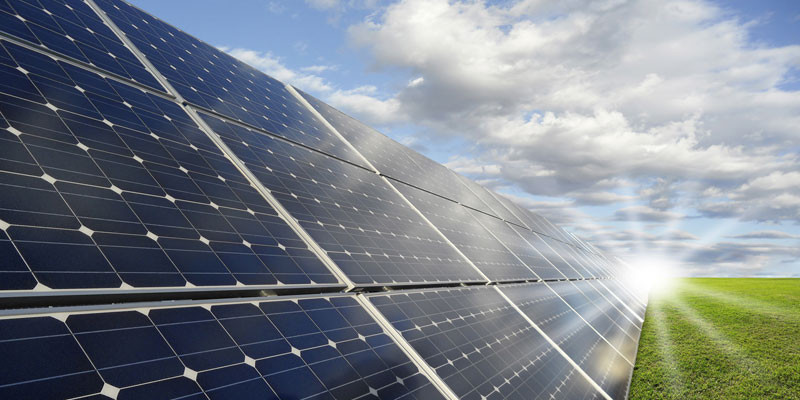“If the sun were a day laborer, it wouldn’t rise so early”, croon the protagonists of the acclaimed and award-winning film ‘Alcarràs’ (2022), directed by Carla Simón, which portrays one of the current crossroads faced by many areas of rural Spain,such as the province of Lleida, where the story unfolds: the choice between integrating renewable energies or fighting for the survival of the agricultural sector. However, while ‘Alcarràs’ exemplifies the conflict between tradition and modernity, in the case of renewable energy, reality surpasses fiction, but in a good way. The sector is making a great effort to make this dichotomy history, as the balance between the agricultural sector and the generation of solar energy ,known as agrovoltaic, – is becoming increasingly common.
Spain, with approximately 2,500 hours of sunshine per year, positions solar energy as the key renewable source to achieve theEuropean Union’s objectives, which recently elevated the target for renewable energy consumption to 42.5% by 2030. Undoubtedly, solar energy has the potential to offset much of the world’s energy demand, but are we on the right track?
In Catalonia, renewable energies are positioned as a key element in the transition towards a more sustainable generation model and energy independence. However, the autonomous community is lagging behind in their deployment. In 2022, renewable energies accounted for only 15.6% of gross electricity production, equivalent to 6,934.6 GWh. In addition, photovoltaic installations contributed only 377.54 GWh to the grid, with Lleida being the leading producer within the demarcation.
Likewise, according to the latest report of the Observatory of Renewable Energies in Catalonia, dependence on external resources to cover electricity demand increased to 84.6% in 2021. In terms of installed capacity, progress has been minimal: net renewable generation capacity increased by only 1.42 MW, divided between 0.16 MW from hydroelectric and 1.26 MW from photovoltaic sources – excluding self-consumption facilities-. Thus, Catalonia faces a significant task ahead: harnessing its resources without relying solely on green energy arriving from Aragon through EHV lines.
The reality is that Catalonia does not have enough money and the challenge to achieve climate neutrality is enormous. According to the Prospectiva Energètica de Catalunya 2050, it is predicted that by 2030 it will be necessary to incorporate up to 12,000 MW of renewable energies (5,000 MW of wind energy and 7,000 MW of photovoltaic). In this context, it is expected to take advantage of the photovoltaic potential on roofs and rooftops, mainly associated with self-consumption systems and distributed generation, which is necessary, but not sufficient to advance in the energy transition. Therefore, there is a need to develop large-scale renewable energy sources, betting on solar and wind farms, which will reduce dependence on external resources and create jobs, contributing to a more sustainable future for future generations.
In this scenario, agrovoltaics emerges as the key to demonstrating that it is possible to achieve maximum synergy between photovoltaic energy and the agricultural sector, whether crops or livestock, through the installation of solar panels on agricultural land. In this way, this alternative is positioned as one of the solutions to advance in the fight against climate change, while offering the possibility of achieving additional uses and profitability to the land where photovoltaic projects are located.
The coexistence of the agricultural world and solar energy is not only possible, but highly beneficial. Agrovoltaics can optimize land use, but also generate benefits such as improved biodiversity, the coexistence of agricultural and livestock activities, and enhanced productivity. Beyond providing clean energy, the elevation of solar panels above crop fields improves farm efficiency by providing shade, reducing temperatures and preventing water evaporation. It also helps protect the crops from hail and heavy rains, creating a more favorable environment for fruit and vegetable growth.
Specifically, in Lleida, where the agricultural system is key to the economy and employment generation, the abundance of agricultural land – almost 827 hectares of Useful Agricultural Area in 2020,according to INE agricultural census data – presents a unique opportunity for this alternative, contributing to the energy transition. In fact, according to a report published by Nature magazine in 2019, the world’s energy demand could be supplied by solar production if 1% of farmland were converted to an agrovoltaic system.
Finally,dispelling the myth that renewable energy companies are enemies of the agricultural sector is imperative, they should be seen as great allies.Instead of seeing the expansion of renewable energies as a threat to agriculture, we must understand that they are great allies to protect agricultural activity from climate change, diversify income to strengthen the rural economy and improve land productivity.
In Catalonia, the first agrovoltaic solar parks are already taking off. Among the most advanced initiatives is the “La Romiguera” plant in Montblanc, promoted by Energies Renovables Terra Ferma. It is an example of coexistence between energy production and organic cultivation of cereals and legumes, along with aromatic herbs with a pollination area and a refuge of biodiversity free of pesticides and pollutants. In Lleida, the first projects are also beginning to emerge, such as the one in Vilagrassa (Urgell), promoted by KM0, where photovoltaic energy production will be combined with the cultivation of apple trees, and solar panels will be installed at a height above the tree canopy.
What is certain is that the sun will continue to rise early. For this reason, agrovoltaics is emerging as a solution in Catalonia and, more specifically, in Lleida, to move towards a clean energy model and reinforce the path towards energy sovereignty. Undoubtedly, the availability of agricultural land is an alternative to boost agricultural and livestock production, while contributing to the generation of sustainable energy, achieving the key balance.
Jordi Francesch, Board Member Verdian



